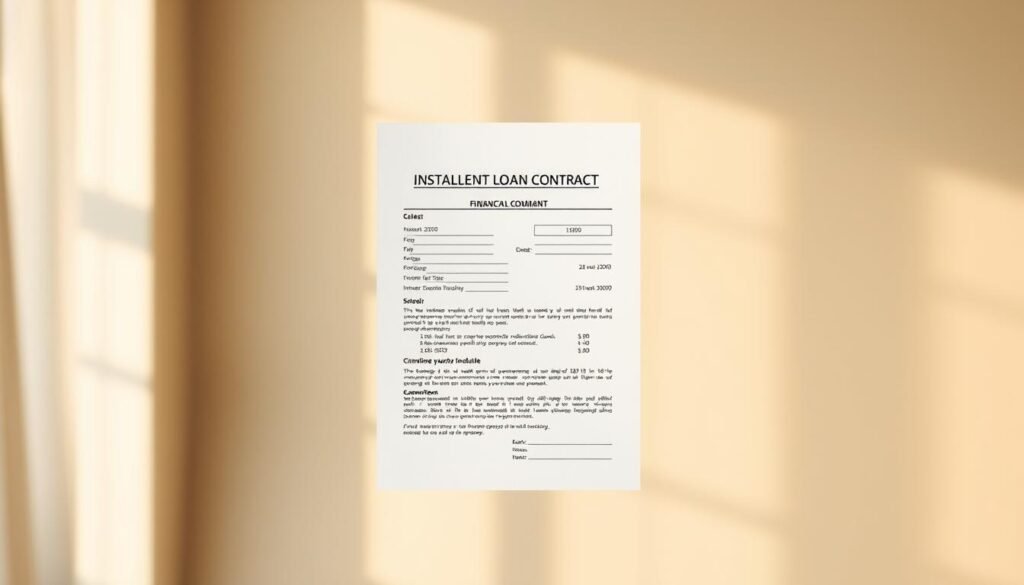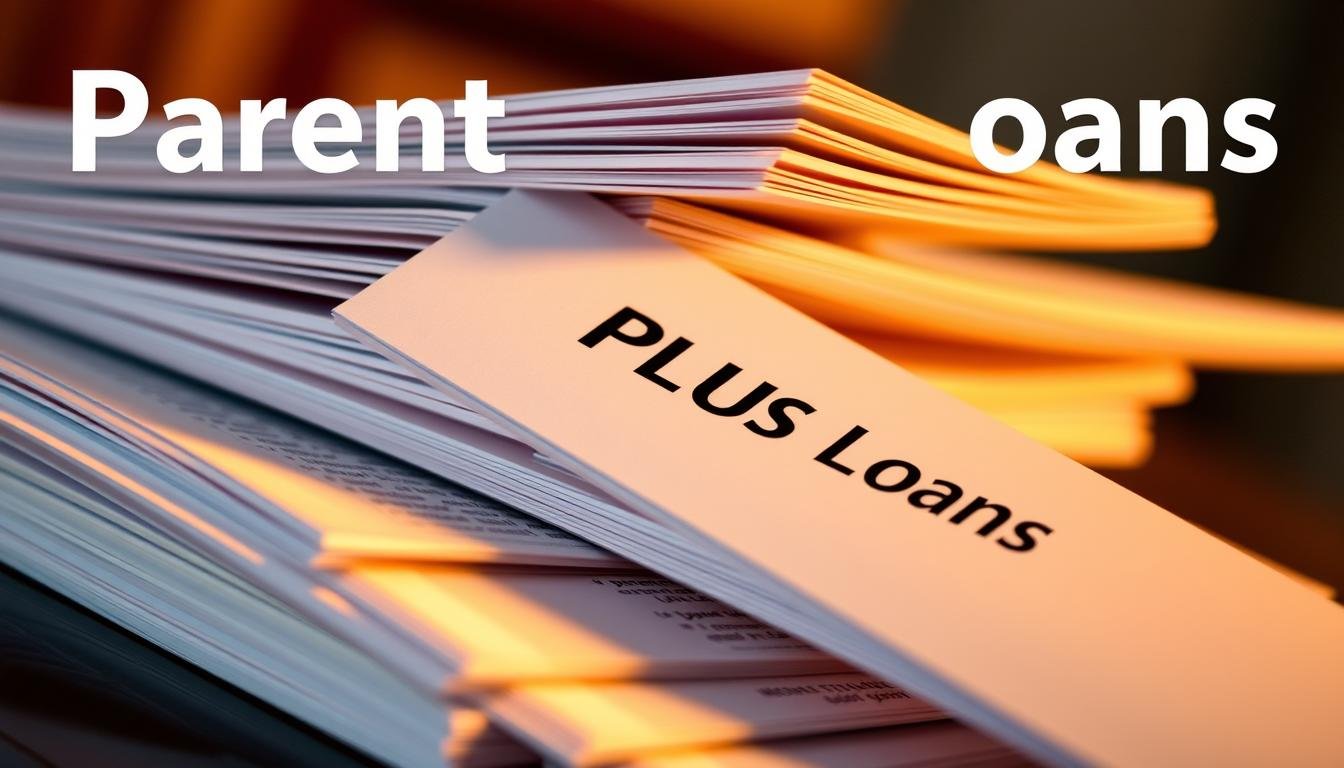Quick answer: The bank offers installment lending options that let a borrower take a lump sum and repay it in fixed payments over a set term.
An installment loan usually comes with interest and possible fees. Lenders review credit scores, income, and current debt to set rates and limits. Approval and cost depend on the applicant’s credit profile and the product chosen.
Some offerings are secured with collateral like a vehicle, while unsecured forms carry higher rates because they pose more risk for the lender. Many people use this type of funding to consolidate higher-rate balances or to cover unexpected medical or home repair bills.
Why this guide helps: It explains how installment repayment gives predictability, compares these loans with revolving credit, and outlines alternatives if a bank’s terms do not match a borrower’s goals.
Key Takeaways
- Installment credit provides a lump sum repaid in equal payments over time.
- Lenders evaluate credit, income, and debt to set terms and approval.
- Secured options use collateral; unsecured options often cost more.
- Repayment predictability can simplify budgeting and debt consolidation.
- Compare rates, fees, and alternatives before committing to a product.
Quick answer: does capital one do personal loans
https://www.youtube.com/watch?v=UtUSEgpLcwg
Product availability for a fixed-term borrowing product can change, so borrowers should confirm the latest offerings directly with Capital One.
Many banks and online lenders let people preview rates with a soft-credit check. That soft check shows estimated terms without affecting a credit score. It helps compare options before a full application.
- Whether a pre-qualification or pre-approval is available and how it affects your credit.
- How credit, income, and existing debt shape the amount and rate you may receive.
- Fees, repayment features, and funding timelines so total cost and speed are clear.
Tip: Be specific about the purpose for the funds—debt consolidation or a one-time expense—so the installment approach fits monthly goals. If you’re pre-qualified or ’re pre-approved, final terms still need verification and may change after a hard pull.
Personal loans explained: installment loans versus revolving credit

With closed-end installment credit, borrowers receive funds up front and pay back equal amounts on a set timetable.
What is an installment loan and how it works
An installment loan is a closed-end type of credit that disburses a lump sum and requires fixed payments until the balance is zero. Examples include auto financing, mortgages, student loans and many installment loans used for general needs.
Each payment usually includes principal and interest. Accounts close when the final payment posts, giving a clear payoff time and amount.
Secured vs. unsecured and the role of collateral
Some loans are secured and use collateral such as a car or home. Collateral protects the lender and often lowers the interest rate.
Unsecured options skip collateral but may have higher rates since lenders take more risk. Lenders evaluate credit score, income, and existing debt when deciding terms.
How installment borrowing differs from revolving credit
Revolving credit, like credit cards, is open-end and can be used repeatedly up to a limit. An installment structure is a single disbursement with steady payments, which can help with budgeting and reducing variable spending.
| Feature | Installment | Revolving credit |
|---|---|---|
| Access | One-time lump sum | Reusable up to a limit |
| Payments | Fixed schedule, equal payments | Minimum varies, balance can rotate |
| Collateral | May require collateral (car, home) | Usually unsecured |
| Cost factors | Interest and fees set by credit score and amount | Variable interest rates and potential fees |
How to get personal loans if Capital One isn’t an option

When a particular bank product is off the table, exploring multiple lender channels helps find competitive terms. Start by reviewing a credit score and debt-to-income ratio to estimate eligibility and set a target monthly payment.
Check credit scores and debt-to-income before you apply
Verify credit reports for errors and note the scores. Lenders consider creditworthiness—including scores and debt-to-income—when offering installment products.
See if you’re pre-qualified or ’re pre-approved with multiple lenders
Use online pre-qualification tools from several lenders to preview rates with a soft inquiry. That lets a borrower compare potential offers without impacting credit scores.
Compare lenders on interest rates, repayment terms and fees
Compare interest, repayment terms, origination fees, and autopay discounts side by side. Check lender reputation, customer support, and typical funding timelines before deciding.
Decide on loan type: unsecured vs. secured and loan amount
Choose a loan type that fits credit profile: unsecured borrowing usually needs stronger credit, while secured options require collateral but may lower rates. Define the amount conservatively to avoid excess interest.
- Tip: Improve terms by paying down balances or fixing report errors before applying.
- Keep documents ready; final approval can change after verification, and prepared paperwork speeds up access to funds.
Rates, fees and repayment terms to consider before you get personal
Before signing, borrowers should review how rates and fees shape the total cost over the life of a loan. Installment borrowing combines principal and interest into equal payments, so the quoted interest rate directly affects what is paid each month and across time.
Interest rates and how they affect total cost over time
A higher interest rate raises monthly costs and the lifetime interest paid. Modeling alternative interest rates and terms helps show savings from a lower rate. Use lender calculators to preview scenarios before choosing an amount.
Common fees: origination, late fees and prepayment penalties
Watch for origination charges, late fees, and any prepayment penalties. Compare APRs and fee schedules, not only the nominal interest rate, so there are no surprises.
Choosing a repayment term that fits monthly payments
Longer repayment terms lower monthly payments but usually increase total interest. Shorter terms cost less overall but raise each payment. Check for discounts like autopay and remember that secured versus unsecured product type can change pricing and underwriting.
Smart ways to use a personal loan: consolidating debt and covering expenses

A strategic installment can turn scattered balances into a single, predictable monthly obligation. This approach helps people who want clear payoff timing and steadier budgeting.
Consolidate debt to replace high credit card rates with one installment
Consolidate debt by using a fixed installment to pay off multiple credit card accounts. For example, Jack moved business-related card balances into an installment loan to simplify loan pay and cut total interest.
Replacing several statements with one scheduled payment can reduce the chance of revolving balance creep and set a clear end date.
Cover unexpected expenses like medical bills or home repairs
Sue used a short-term installment loan to spread a medical bill over time. That steady payment made planning easier and avoided piling new card balances onto existing debt.
Avoid using loans for wants to prevent unnecessary debt
Loans should fund needs, not discretionary purchases. Choosing wants over needs can create more debt and extend how long it takes to repay.
- Consolidation may lower total cost if the new interest rate is better than card rates.
- Confirm monthly payment fits the budget before applying.
- After consolidation, manage or close cards to avoid new balances.
Capital One alternatives: credit cards, balance transfers and lines of credit

Choosing the right product starts with clarifying whether recurring access or a set payoff date matters most.
Credit cards and balance transfer options to lower interest
Credit cards with a balance transfer can cut interest rates for a promo period. That helps to consolidate debt temporarily.
Watch for transfer fees and the rate jump after the promo ends. Read the card agreement for fees and penalties.
Personal lines of credit and HELOCs as flexible funding options
Lines of credit and HELOCs act as revolving credit. They let borrowers draw, repay, and draw again up to a set limit.
HELOCs are secured by home equity and often have variable pricing tied to market interest rates. A lender may offer lower pricing if an asset like a car or home backs the credit.
Buy now, pay later and why payday loans are risky
BNPL services split purchases into small payments at checkout. They can help with short-term budgeting but may add fees or interest if terms are missed.
Payday loans are high-cost and short duration. They carry large fees and can trap borrowers in repeated borrowing. Some states limit or ban them.
- Compare rates, fees, and term length before choosing a product.
- Revolving credit suits ongoing expenses; an installment plan fits a defined lump sum or to consolidate debt.
How applying for a loan can affect credit and what tools can help

Before submitting an application, it helps to know how inquiries and payment history shape a credit record. A full application can trigger a hard inquiry that may temporarily lower scores, while soft checks used for pre-qualification do not affect credit.
Hard inquiries, on-time payments and overall credit impact
Closed-end installment accounts usually report to the bureaus. That means how a borrower manages payments, balances, and account status will influence credit over time.
Consistent on-time payments build positive history and can strengthen a profile. Missed payments do harm and may raise future borrowing costs.
Using CreditWise to monitor scores before you apply
CreditWise from Capital One is free for everyone and includes a simulator that shows how actions — like opening a new account or paying down balances — might affect credit scores. Using such tools helps plan the timing of applications and decide whether ’re ready to proceed.
- Submitting a full application = possible hard inquiry that can temporarily affect credit.
- Good loan pay performance builds a thicker file and demonstrates reliability to future lenders.
- Review credit scores, fix errors, keep other balances low, and set up autopay to avoid missed payments.
Conclusion
Conclusion
Choosing a loan starts with purpose and a realistic budget. An installment product suits goals like consolidating debt or covering urgent expenses when the payment schedule matches income.
Compare offers on interest, fees, and term length. Consider alternatives such as balance transfers, lines of credit, or BNPL when flexibility matters more than a single disbursement.
Use credit monitoring and simulators (for example, CreditWise) to time applications and improve outcomes. Whenever possible, preview offers through pre-qualification and then finalize with the lender that best aligns with goals.
Final thought: Define the purpose up front, avoid overborrowing, and stay current on payments to protect credit and lower total cost over the life of the account.






